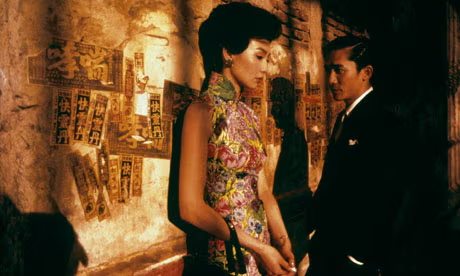In the Mood for Love (2000)

In the Mood for Love is a 2000 romantic drama directed by Wong Kar-wai, widely regarded as one of the finest films of the 21st century. Set in Hong Kong in the 1960s, the film elegantly explores themes of love, longing, and the complexities of human relationships through its visually stunning narrative and poignant emotional depth.
The story revolves around two neighbors, Chow Mo-wan (Tony Leung) and Su Li-zhen (Maggie Cheung), who find themselves living in adjacent apartments. Both are married but feel neglected by their spouses, leading to a deep sense of loneliness. When they discover that their partners are having an affair with each other, they form a connection based on their shared pain and heartbreak. As they spend time together, their bond deepens, but societal norms and personal hesitations prevent them from fully expressing their feelings.

Wong Kar-wai’s direction is characterized by its meticulous attention to detail and a distinct visual style. The cinematography by Christopher Doyle employs rich colors, soft lighting, and creative framing that evoke the mood of the era. The film’s aesthetic is both lush and nostalgic, immersing viewers in the intimate world of the characters’ lives. The use of slow motion and lingering shots enhances the emotional weight of their encounters, allowing audiences to feel the tension and yearning that permeates their relationship.
The narrative unfolds with a sense of restraint, mirroring the characters’ own hesitance to act on their feelings. Dialogue is sparse yet impactful, filled with subtext that reveals the depth of their emotions. Wong’s screenplay captures the nuances of love and desire, portraying the bittersweet nature of their connection. The film’s pacing allows for reflection, emphasizing the beauty of unfulfilled longing.

The performances of Tony Leung and Maggie Cheung are nothing short of remarkable. Leung’s portrayal of Chow is marked by subtlety and depth, capturing the internal struggles of a man torn between desire and duty. Cheung’s performance as Su is equally compelling, reflecting a woman caught in a web of societal expectations and personal longing. Their chemistry is palpable, and their interactions are charged with a delicate tension that resonates throughout the film.
The soundtrack, featuring nostalgic songs and haunting melodies, further enhances the film’s emotional landscape. The recurring use of the song “Yumeji’s Theme” by Shigeru Umebayashi beautifully underscores the characters’ longing and the passage of time, adding to the overall atmosphere of melancholy and desire.

In the Mood for Love is not just a story about infidelity; it is a meditation on the nature of love itself. It explores how societal constraints and personal insecurities can shape relationships, often leading to missed opportunities and unfulfilled desires. The film raises questions about the nature of fidelity, the impact of time, and the complexities of human connection.
Upon its release, the film received critical acclaim, winning multiple awards and establishing Wong Kar-wai as a master filmmaker. It has since become a cultural touchstone, frequently cited for its artistic achievements and emotional resonance. The film’s influence extends beyond cinema, inspiring fashion, photography, and art, and it continues to be studied and celebrated for its innovative storytelling.
In conclusion, In the Mood for Love is a beautifully crafted exploration of love, longing, and the intricacies of human relationships. With its stunning visuals, powerful performances, and rich thematic content, the film remains a timeless masterpiece that resonates with audiences worldwide. Whether experienced for the first time or revisited, In the Mood for Love offers a poignant reflection on the complexities of desire and the emotional landscapes of our lives.











